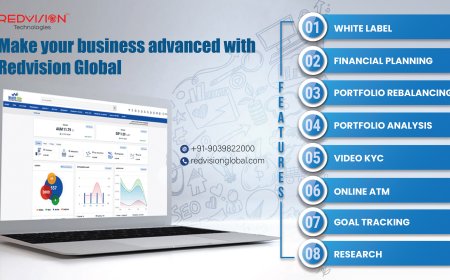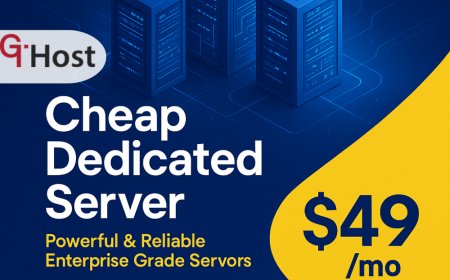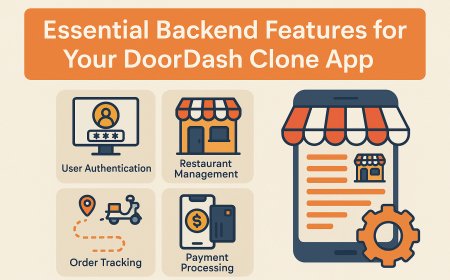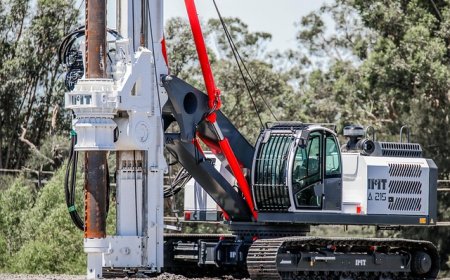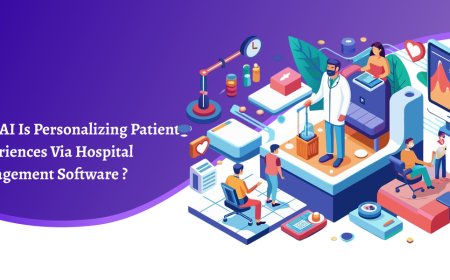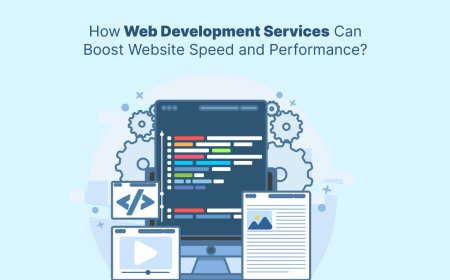How Integrating DevSecOps Practices Improves the Effectiveness of Cloud Security Solutions?
Learn how integrating DevSecOps practices strengthens cloud security solutions by automating compliance, reducing risks, and ensuring continuous protection.

As organizations continue shifting to the cloud for better scalability, flexibility, and efficiency, security has become a bigger concern than ever before. Traditional security approaches often fall short in the cloud environment because they are not built for the speed and automation that cloud operations require. Thats where DevSecOps comes in.
DevSecOps is short for Development, Security, and Operations. It's a modern approach that integrates security directly into the DevOps process, making security a shared responsibility throughout the development lifecycle. When businesses adopt DevSecOps in their cloud security strategy, they get stronger, more responsive, and more effective protection.
In this blog, well explore how integrating DevSecOps practices can significantly improve cloud security solutions and make your digital assets more resilient against todays threats.
What Is DevSecOps?
Understanding the Basics
DevSecOps is a mindset and a methodology. Instead of leaving security to be handled at the final stage of the development process, DevSecOps makes security an ongoing and continuous practice. Developers, security experts, and operations teams all work together from the beginning to build secure software.
This model encourages automation, early detection of vulnerabilities, continuous monitoring, and faster remediation. It brings everyone on the same page and reduces the risk of security being an afterthought.
The Evolution from DevOps to DevSecOps
DevOps focuses on development and operations working together to speed up software delivery. But security was often sidelined in the name of speed. DevSecOps evolved as a natural next step, integrating security practices into DevOps without slowing things down.
It ensures that security is built-in, not bolted on. That makes it ideal for fast-paced cloud environments, where agility is critical.
Why Cloud Security Needs DevSecOps
The Nature of Cloud Environments
Cloud platforms are dynamic. They scale up and down rapidly, deploy applications across multiple regions, and rely heavily on automation. These features make them flexible and cost-effective but also open up more opportunities for cyber threats.
Attackers can exploit misconfigured services, exposed APIs, or outdated code. Without a proactive security approach, these risks multiply. DevSecOps helps address these challenges head-on.
Security in Motion
Traditional security models are static and manual. In a cloud environment where changes happen frequently, a reactive approach simply wont work. DevSecOps introduces continuous securitymonitoring, testing, and patching vulnerabilities in real-time, without halting workflows.
This level of responsiveness is essential for staying ahead of threats in the cloud.
Key Benefits of Integrating DevSecOps into Cloud Security
Early Detection and Faster Fixes
One of the strongest benefits of DevSecOps is its ability to identify vulnerabilities early in the development cycle. Catching issues in the early stages is much easier and less expensive to fix than dealing with them after deployment.
For instance, if a coding error that exposes sensitive data is caught during the build stage, it can be corrected immediately. If its found after deployment, it could lead to data leaks, compliance issues, or system downtime.
Automation and Continuous Monitoring
DevSecOps uses automation tools to run security checks without human intervention. These tools scan code, monitor system behavior, and detect anomalies 24/7.
This approach ensures that your cloud infrastructure is constantly being watched. Even if a threat is detected in the middle of the night, automated processes can contain or neutralize it instantly.
Shared Responsibility and Collaboration
Security is not just the job of the security team anymore. DevSecOps encourages a culture of shared responsibility. Developers write secure code, operations maintain safe environments, and security teams provide guidance and tools.
This collaborative approach makes it easier to create secure applications and maintain cloud security effectively.
Scalable Security Practices
Cloud systems are often designed to scale quickly. DevSecOps practices are also designed with scalability in mind. Security tools and practices can be automated and applied uniformly across different cloud resources and services.
Whether youre managing 10 servers or 1,000, DevSecOps ensures security doesnt become a bottleneck.
Core DevSecOps Practices That Strengthen Cloud Security
Code Analysis
Automated tools can scan code as its being written. This helps developers catch syntax errors, insecure functions, or hardcoded secrets (like passwords) before the code even leaves their machines.
It acts like a safety net that keeps bad code out of the pipeline from the start.
Configuration Management
Misconfigurations in cloud services like storage, firewalls, or network permissions are common causes of data breaches. DevSecOps tools can automatically audit and correct these configurations to keep your environment safe.
They also maintain logs of changes, making it easy to roll back if needed.
Threat Modeling and Risk Assessment
Before building or deploying a system, DevSecOps teams often perform threat modeling to identify potential risks. This step helps create a clear strategy for dealing with the most likely threats and ensures the right defenses are in place from day one.
Vulnerability Scanning
DevSecOps involves regularly scanning systems and applications for known vulnerabilities. These scans are automated and can be scheduled to run daily or even hourly.
When a vulnerability is detected, alerts are sent, and patches can be deployed automatically or with minimal manual intervention.
Compliance as Code
Cloud environments often need to follow industry regulations like GDPR, HIPAA, or PCI-DSS. DevSecOps helps automate compliance by turning rules into code.
This way, systems can be tested and verified for compliance continuously instead of waiting for periodic audits.
Read more: How DevSecOps Drives Continuous Security and Compliance in Cloud Environments?
Real-World Impact of DevSecOps in the Cloud
Faster Releases, Better Security
Companies that adopt DevSecOps can deliver new features faster without compromising on security. Since security checks are automated and built into every step, theres no need to pause for manual audits or last-minute fixes.
This allows businesses to keep up with market demands while still protecting their data and users.
Reducing the Risk of Data Breaches
By detecting and fixing security flaws early, DevSecOps reduces the chances of a successful cyberattack. In industries like finance, healthcare, or e-commercewhere customer data is extremely sensitivethis proactive approach is a game changer.
Strengthening Incident Response
In the event of a security incident, DevSecOps systems often have clear logging, alerting, and rollback features. Teams can trace what happened, contain the damage, and restore systems quickly.
This minimizes downtime and limits the impact of any breach or attack.
Common Tools Used in DevSecOps for Cloud Security
Jenkins
Used for continuous integration and deployment. Security plugins can be added to scan code automatically during builds.
Terraform
A tool for managing infrastructure as code. It ensures consistent and secure deployments of cloud environments.
Aqua Security
A solution that secures containers and serverless applications, popular in modern cloud-native setups.
Snyk
A popular tool for finding vulnerabilities in code, containers, and dependencies.
AWS Security Hub or Azure Security Center
Native cloud tools that help monitor and manage security across services on their platforms.
How to Start Implementing DevSecOps in Your Cloud Strategy
Start small. Choose one part of your development pipelinemaybe code scanning or container securityand integrate DevSecOps tools there.
Gradually expand to include configuration management, vulnerability scanning, and compliance checks. Make sure your teams are trained and understand their role in securing the cloud.
Collaboration and communication are key. Hold regular meetings to discuss security findings, share feedback, and refine your strategy.
Conclusion
Cloud environments offer great benefits, but they also come with unique security challenges. Traditional methods arent enough anymore. By integrating DevSecOps practices, businesses can keep up with the speed of the cloud while maintaining strong, continuous security. This approach brings teams together, automates important tasks, and helps spot risks before they become problems. Whether you're a startup or a large enterprise, DevSecOps helps you build secure, reliable systems that customers can trust. As technology keeps evolving, choosing the right approach to cloud security becomes even more important. For businesses looking to innovate securely, whether its launching a new platform or working with a clone app development company, DevSecOps isnt just a best practiceits essential.
FAQs
What is the main goal of DevSecOps in cloud environments?
The main goal is to integrate security throughout the development process to identify and fix issues early, improve collaboration, and enhance overall cloud security.
Can DevSecOps slow down development speed?
Not if implemented correctly. In fact, DevSecOps often speeds up development by automating security checks and reducing the need for manual testing or late-stage fixes.
Is DevSecOps only for large companies?
No, even small and mid-sized businesses can benefit from DevSecOps. Many tools are open-source or affordable, and the principles apply to projects of any size.
Whats the difference between DevOps and DevSecOps?
DevOps focuses on fast development and operations. DevSecOps adds a security layer, ensuring that speed doesnt come at the cost of safety.
How do I train my team for DevSecOps?
Start with workshops, online courses, or internal training sessions. Encourage a culture of collaboration between development, security, and operations teams.













